April 24, 2024 | 13:26 GMT +7
April 24, 2024 | 13:26 GMT +7
Hotline: 0913.378.918
April 24, 2024 | 13:26 GMT +7
Hotline: 0913.378.918
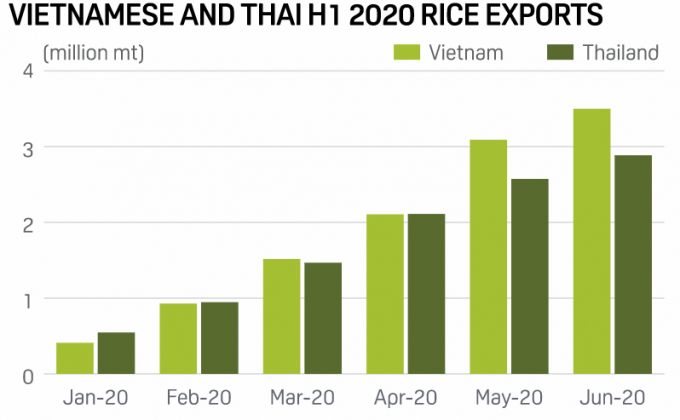
Rice exports of Vietnam and Thailand in the first quarter of 2020. Infographic by Reuters.
Executive Vice President of the Bangkok Bank Suwatchai Songwanich has said Vietnam had a clever rice strategy when importing rice from India after decades.
According to the expert, Vietnam, the world's second-largest rice exporter, this month made a surprising move by starting to import the grain from India.
“Vietnam is importing the cheaper Indian rice to meet domestic demand while saving its output, which is currently selling at a multi-year high, for the export market,” said Suwatchai.
According to the Bangkok Post, Vietnamese rice prices recently outperformed Thailand’s, which was rarely seen for years.
“One reason why Vietnam’s rice prices are doing well is that it concluded a free trade agreement with the EU, opening the door to the lucrative European market,” said Suwatchai, adding that the Regional Comprehensive Economic Partnership (RCEP) that Vietnam signed late last year would also open more markets for higher-priced rice.
“Vietnam is in a good position to take advantage of these opportunities, having worked hard to improve the quality and variety of its rice,” he said.
In addition to producing more high-quality fragrant rice, Vietnamese producers have also been developing varieties targeted to market trends such as soft-textured white rice, as well as reorganising production methods, applying more food safety and quality management, and increasing yields, he said.
These efforts have led to higher yields, better brand recognition, and global accolades, such as ST25 winning the best rice variety at the World Rice Trade Conference in 2019 and coming second to Thailand last year.
According to the expert, Thailand once held the crown as the world’s biggest rice exporter but has now slipped to third place after India and Vietnam.
“Thailand needs to learn from how Vietnam adapted its trade to fit market developments,” he said.
“Thai rice has been losing popularity in recent years as consumers have shifted to softer rice types and the country risks dropping to fifth place over the next decade if it remains complacent and does not develop a more diverse and competitive long-term rice strategy.”
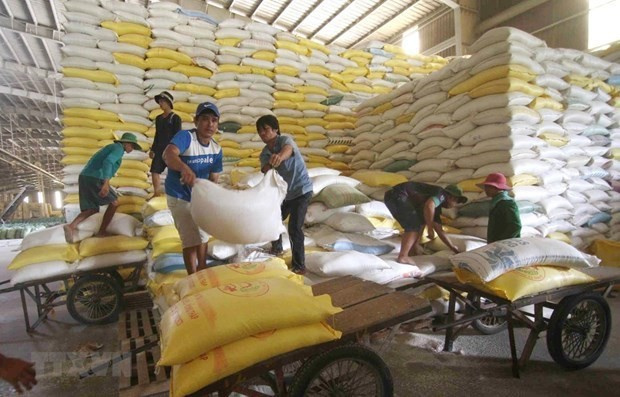
Vietnam is now the second-largest rice exporter in the world. Photo: VNA.
“There are some positive signs that policymakers are taking action on this front. Last year Commerce Minister Jurin Laksanawisit announced a five-year strategy to accelerate the development of 12 new rice varieties: four hard-textured varieties of white rice, four varieties of soft-textured white rice, two varieties of Thai hom mali fragrant rice, and two varieties of high-nutrition rice. However, Thailand will need to do more to regain its crown as the world’s largest rice exporter. To judge from Vietnam’s experience, the entire supply chain needs to be looked at. Thai productivity has also lagged regional competitors for years — local rice yields are about 450 kilograms per rai compared with 960 kilogrammes for Vietnam and two tonnes for China,” said Suwatchai.
Translated by Bich Huong
/2024/04/22/3159-9-202859_158.jpg)
(VAN) There are three main solution pillars for developing the crop production industry, including resources, infrastructure, and science and technology.
/2024/04/22/4244-anh-3-193503_494.jpg)
(VAN) The national crop production strategy is a good opportunity to create diversity, bring income to farmers, increase economic value, and contribute to socio-economic development.
/2024/04/22/1205-1-190414_594.jpg)
(VAN) The Prime Minister issued Decision No. 1784 dated December 30, 2023, approving the plan to develop the crop production industry until 2030, with a vision to 2050.
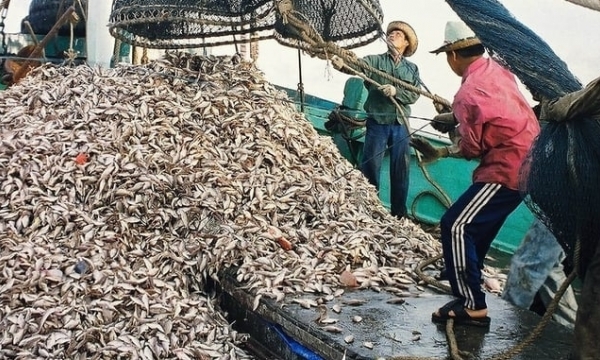
(VAN) The goal of the action plan is to identify anti-IUU fishing as an urgent, crucial and long-term task for the sustainable development of the fisheries sector.
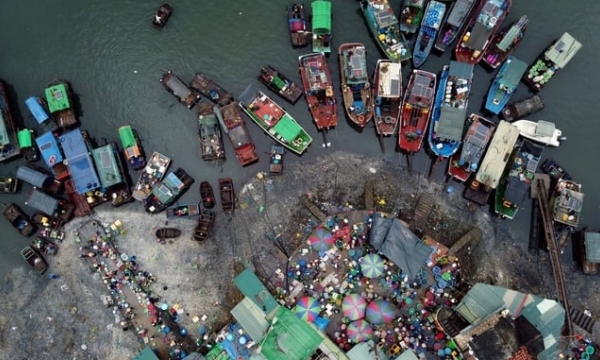
(VAN) Despite numerous challenges, Permanent Member of the Secretariat Truong Thi Mai emphasized the need for decisive action to achieve tangible results in anti-IUU fishing efforts.
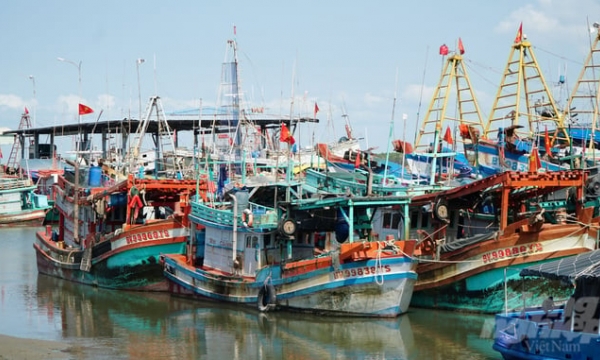
(VAN) The EC's IUU 'yellow card' must be removed in order to support Vietnam's fisheries sector, international reputation, and economic development.
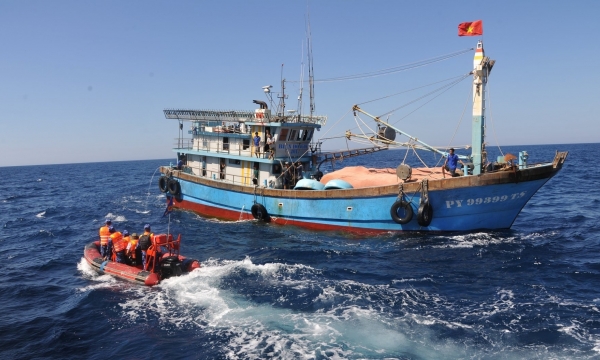
(VAN) The province of Phu Yen is instructing its departments, sectors, and coastal areas to promptly resolve some current limits while strictly dealing with breaches of illegal, unreported, and unregulated (IUU) fishing.